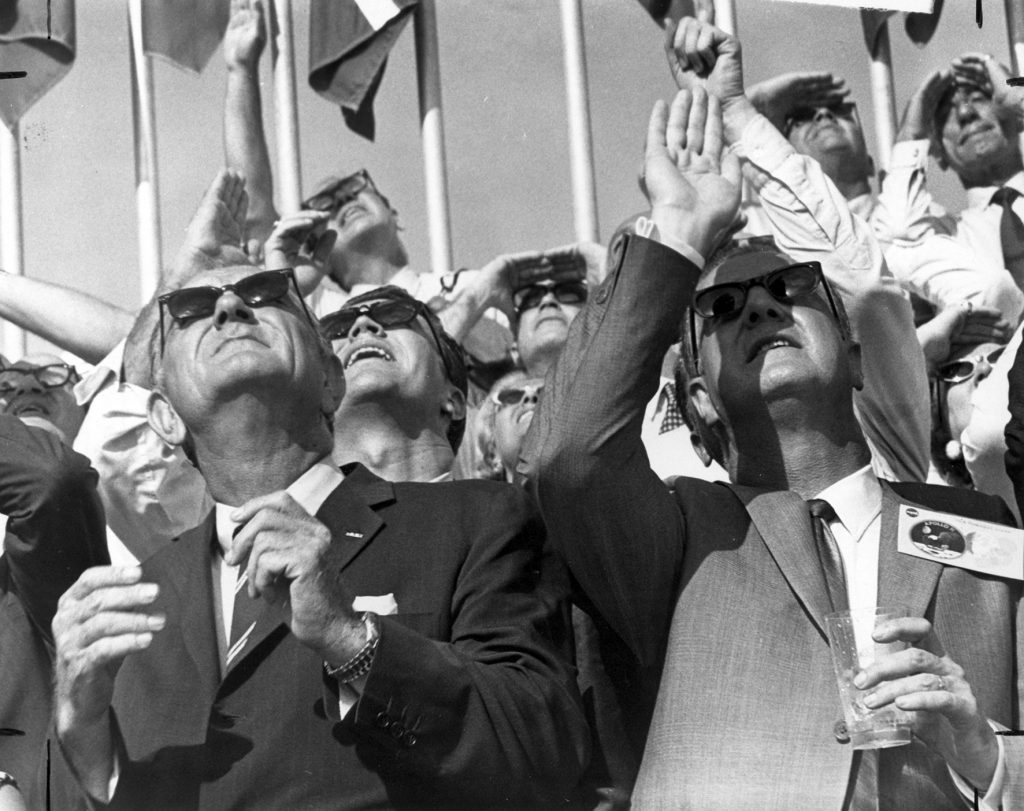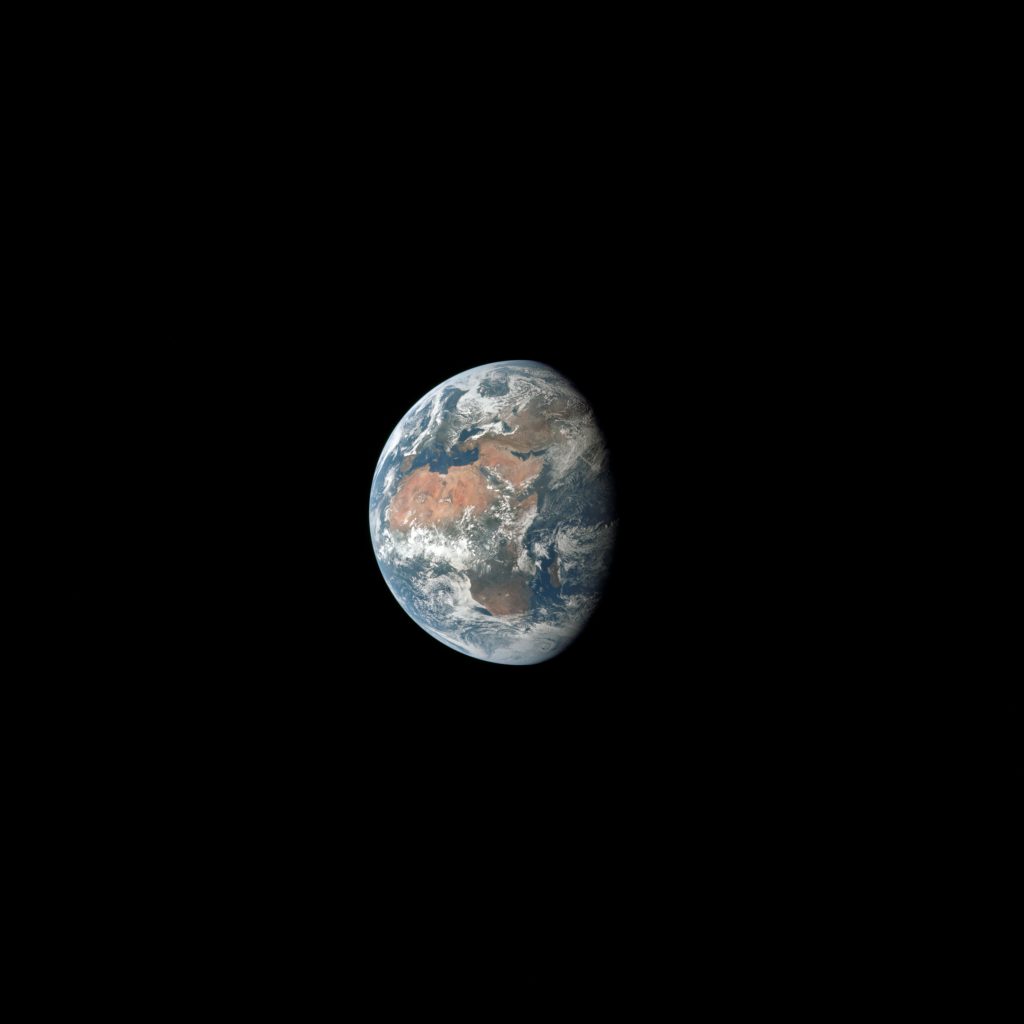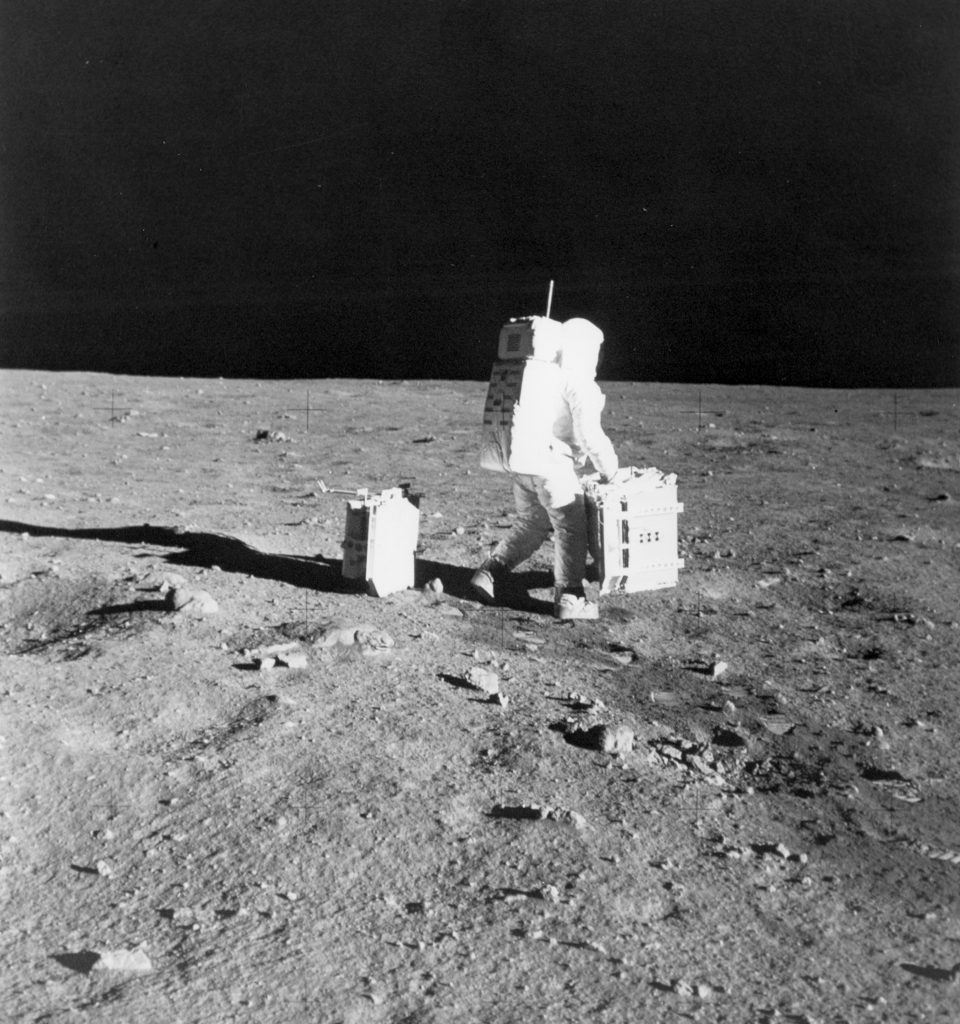by Claudia Stritof
_
“To listen to certain limited brains […] humanity would be […] condemned to vegetate on this globe without any hope of leaping one day into the planetary spaces! Nonsense! We will go to the Moon and then to the planets and stars […] Distance is nothing but a relative word “.
Prophetic are the words of Jules Verne who, in his novel From the Earth to the Moon in 1865, had foreshadowed the fateful moment when man would arrive to our satellite. A dream that became a reality at 2:56 am on 21 July 1969, when Neil Armstrong and Edwin “Buzz” Aldrin took their first steps on the lunar soil.
The space race began in 1957 with the launch of Sputnik, the first artificial satellite launched by the Soviet Union. An event that shook the whole world and in particular the United States, which, in no time, upgraded their space programs, until, in 1969, the astronaut activities coordinator officially communicated to Armstrong, Aldrin and Michael Collins, the crew of Apollo 11, that, during the July mission, they would be the first men to walk on the moon.

On 16 July 1969 the whole world stood in religious silence to hear the news of the launch of Apollo 11 coming from the Control Center in Houston, Texas, an area that was in turn crowded with curious spectators, high army officials, members of the government, mayors, ambassadors and politicians, such as Vice-President Spiro T. Agnew, along with former president, Lyndon B. Johnson, eager to attend the historic event.
With eyes turned up to the sky, the world held its breath, but the real concern began when the three pilots separated into the lunar orbit to start the landing phase. Armstrong and Aldrin entered the Eagle spacecraft, while Collins remained on Columbia waiting for the two pilots to return to orbit once the mission was completed. After a series of unforeseen events, Armstrong finally uttered the long-awaited words: “Houston, Tranquility Base here. The Eagle has landed”.
The joy of the two pilots was immense, they immediately began to describe what they saw around them: the rocks, their shape, the almost total absence of colour and, above all, It, the Earth, that Armstrong described as “big, bright and beautiful”.

Man had finally landed on the Moon, but the mission was not yet over, because now the two pilots had to get out of the LEM, the Apollo lunar module. The first was Armstrong, who reached the outside of the module and pulled the cable to turn on the camera that sent the incredible live images of the landing. It is impossible to forget the hesitant steps of the pilot as he descends the ladder, the test to climb back up in the heavy space suit, the long final jump for the descent and the first footstep impressed on the “grainy” lunar surface.
Man had conquered the Moon and the numerous images taken of the “magnificent lunar desolation” – as Aldrin called it – are well ingrained in the collective memory of humanity. Clear, in black and white and colour, NASA – in view of the mission – relied on the most important producers of cameras, lenses and films to capture the first images of the Moon. In addition to the Kodak Close-up Stereoscopic Camera, Armstrong and Aldrin used the famous Hasselblad 500 EL Data Camera, specially built in Swedish laboratories. The technicians made a series of alterations to the famous 500 EL model: they replaced the internal lubricants so that they did not evaporate, they covered the silver casing to respond positively to temperature changes, they introduced a glass plate equipped with measuring crosshairs, they got rid of the viewfinder and the keys were enlarged. As for the lenses, Zeiss took care of it, building the famous Bigon f.5.6 / 60mm, while the Kodak made the film thinner so as to allow up to 200 exposures on a 12-meter roll.

If, once the mission was over, the photographic equipment was abandoned on the lunar soil, the same did not happen for the films, which instead – as soon as they arrived on Earth – were sent to the laboratories in Gothenburg, Sweden, where the Hasselblad technicians had the honor and the burden of developing the 132 images taken by the two astronauts. The photographs were impeccable and on the telegram addressed to Victor Hasselblad’s company it was written: “[…] the results are absolutely perfect. NASA believes that there are 132 prize photographs”. Today these images, as well as the various photo, video and audio documents belonging to different NASA collections, are entirely available online, thanks to the meticulous work of reorganization and digitization, which has made about 140,000 files accessible and ready to share and study.
The long story of the three astronauts on the Moon does not end here, because after having collected samples of soil and stones, run, tried different ways of walking and planted the flag of the United States, Armstrong and Aldrin returned to the LEM to go back. The tension was skyrocketing, because the two didn’t know if, once turned on, the module would have actually taken off from the Moon, but against all odds and ominous omen, the module took off from the platform and Collins – who in the meantime had continued to orbit – managed to hook the lander without difficulty and bring the two pilots back to Columbia. The world breathed a sigh of relief, because the three astronauts were now headed home.

“The history of man is made up of challenges, of individual and collective efforts”, which have triggered revolutions big and small and led to crucial scientific discoveries, achieved only thanks to the determination of men and women who imagined the impossible and made it real.
“This is a small step for [a] man, a giant leap for humanity,” said Armstrong and, fifty years after the historic lunar walk, Photolux Festival decided to celebrate the event with the collective exhibition 2: 56 AM. TO THE MOON AND BACK, which hosts a selection of iconic shots from the vast NASA archive, in conversation with the photographs of artists who have worked with the same theme or topics related to space.
2:56 A.M. | TO THE MOON AND BACK
curated by Enrico Stefanelli, Chiara Ruberti,
Naima Savioli, Alessia Locatelli, Chiara Dall’Olio,
Alessandro Romanini e Andrea Pacifici
Palazzo delle Esposizioni of the Banca del Monte di Lucca Foundation
Via del Molinetto, Lucca
PHOTOLUX FESTIVAL | 16 November – 8 December 2019
from Mon to Fri: 3:00 – 7:30 pm
Sat and Sun: 10:00 am – 7:30 pm
All images: © NASA Archive
November 15, 2019




